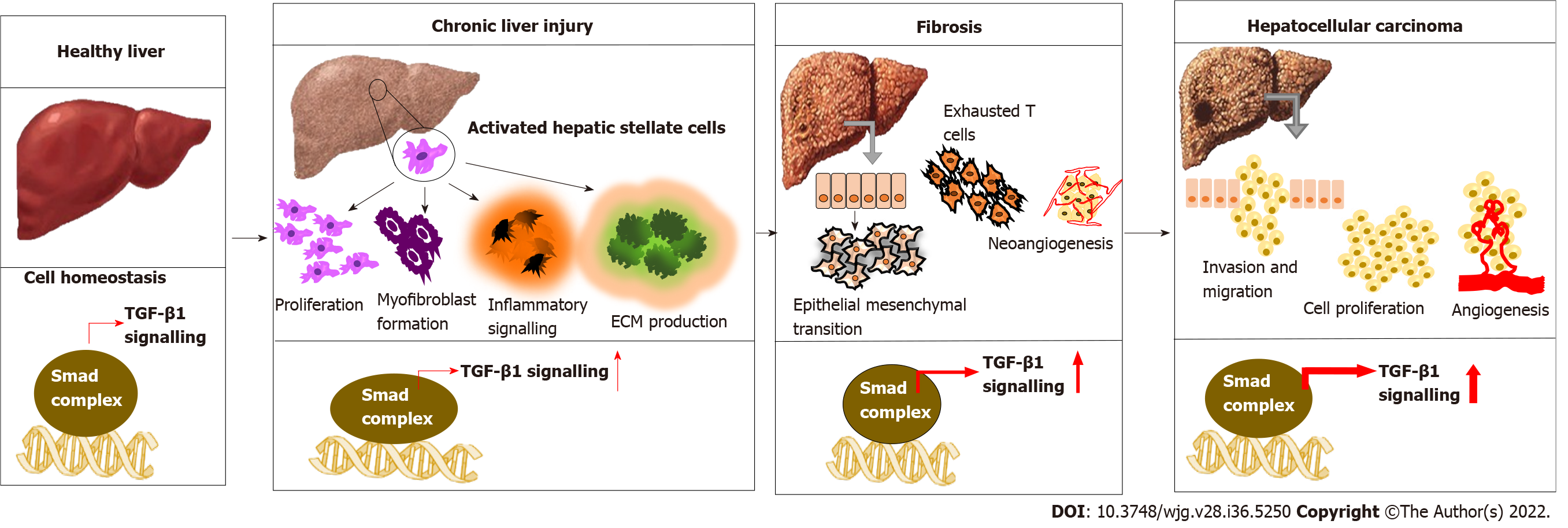Copyright
©The Author(s) 2022.
World J Gastroenterol. Sep 28, 2022; 28(36): 5250-5264
Published online Sep 28, 2022. doi: 10.3748/wjg.v28.i36.5250
Published online Sep 28, 2022. doi: 10.3748/wjg.v28.i36.5250
Figure 1 Involvement of transforming growth factor-beta 1 in various stages of liver dysfunction.
Transforming growth factor-beta (TGF-β) regulates cell homeostasis in normal physiological conditions. As an inflammatory-fibrogenic cytokine molecule, the involvement of TGF-β1 in all phases of liver injury, from fatty liver, steatosis, fibrosis to cirrhosis, and hepatocellular carcinoma, is evident. Causative agents like viral infection, alcohol and co-morbidities like diabetes and obesity trigger the release of a pro-inflammatory cytokine such as TGF-β1, which stimulates inflammation, extracellular matrix (ECM) production, and accumulation of fibrous material that eventually progress to cirrhosis. As the fibrosis continues, the interaction of overexpressed TGF-β1 with integrins and other ECM proteins can alter signaling, accumulate gene mutation, and induce epithelial-mesenchymal transition and hepatocarcinogenesis. TGF: Transforming growth factor; ECM: Extracellular matrix; HCC: Hepatocellular carcinoma.
- Citation: Devan AR, Pavithran K, Nair B, Murali M, Nath LR. Deciphering the role of transforming growth factor-beta 1 as a diagnostic-prognostic-therapeutic candidate against hepatocellular carcinoma. World J Gastroenterol 2022; 28(36): 5250-5264
- URL: https://www.wjgnet.com/1007-9327/full/v28/i36/5250.htm
- DOI: https://dx.doi.org/10.3748/wjg.v28.i36.5250









